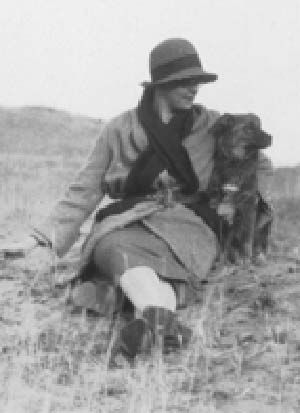Ethel John Lindgren later Utsi
Contents
Notes
Office Notes
RAI Council 1935-36 Member
RAI Council 1936-37 Member
RAI Council 1937-38 Member
RAI Council 1938-39 Hon. Editor
RAI Council 1939-40 Hon. Editor
RAI Council 1940-41 Hon. Editor
RAI Council 1941-42 Hon. Editor
RAI Council 1942-43 Hon. Editor
RAI Council 1943-44 Hon. Editor
RAI Council 1944-45 Hon. Editor
RAI Council 1945-46 Hon. Editor
RAI Council 1946-47 Hon. Editor
RAI Council 1947-48 Vice President
RAI Council 1948-49 Vice President
RAI Council 1949-50 Vice President
RAI Council 1950-51 Member
RAI Council 1951-52 Member
RAI Council 1952-53 Member
RAI Council 1955-56 Member
RAI Council 1956-57 Member
RAI Council 1957-58 Member
RAI Council 1959-60 Member
RAI Council 1960-61 Member
House Notes
1933.01.24 proposed by C.G. Seligman, seconded by L.C.G. Clarke
1937.12.14 The Council elected Dr Ethel J. Lindgren as Hon. Editor
dog's name Kandalin, the puppy of Guekshen given to her by shamaness Olga, photo 9 May 1932 in Hailar
Notes From Elsewhere
Dr ETHEL JOHN LINDGREN-UTSI died at Reindeer House, Aviemore, on 23 March 1988. Born in Evanston, llinois, she was the daughter of a prosperous banker of Swedish descent. After her father's early death, her mother married the composer Henry Eichheim, who specialized in oriental music. As a result, her youth was spent travelling the Far East, and she early acquired an understanding of Chinese culture and society. At Newnham College, Cambridge, she took a first in psychology, following it in 1928-32 with fieldwork in Mongolia and Manchuria. For several months she was under virtual house arrest in Urga. There she met her first husband, the Norwegian Oscar Mamen, who accompanied her on expeditions to the remoter parts of Manchuria.
She visited the Reindeer Tungus (Evenki), on the northwestern border of Manchuria, during a politically tense
period; Japanese troops invested Harbin while she was living there. Among the Tungus she established a close
relationship with a female shaman, whose ritual and beliefs she studied and described in her PhD thesis, submitted
to Cambridge University. She also studied a neighbouring community of Russian-speaking Cossacks.
Because colleagues in Mongolia and the Soviet Union were persecuted by their regimes during the 1930s, 'EJ'
(as she was known to friends) was reluctant to publish anything that might jeopardize informants or foreign
scholars who had helped her; for this reason she published very little about either the Tungus or the Cossacks. Only in her last months did she make arrangements for the editing and publication of her scientific papers, which will appear posthumously
At the invitation of Prof K. B. Wiklund of Uppsala she visited Sweden and studied Lapp reindeer herders. A
traveller in the classical style, she spent months in linguistic and other preparations, and became a capable linguist
with a good knowledge of Russian and Swedish. During World War II she was editor in chief of the Social Survey
and worked at the Royal Institute of International Affairs as liaison officer to allied governments in exile. After the
war for a short time she lectured in the Faculty of Archaeology and Anthropology at Cambridge. She edited the
Journal of the Royal Anthropological Institute from 1938 to 1947.
In 1947 she married Mikel Utsi, whom she had met in Swedish Lapland. With him in 1949 she established the
Reindeer Council of the United Kingdom, and in 1952 reintroduced reindeer to Scotland. The herd in the Cairngorms, which Mikel managed until his death in 1979 (see his obituary in Polar Record 19(123): 630-31), occupied much of her energies in later years, and she was visiting the reindeer when she died.
Ethel John Lindgren was physically a most striking person, well over six feet tall and with fine auburn hair.
She was a good friend of the Scott Polar Research Institute, contributing many rare items to the library and
lecturing on the MPhil programme. Her extreme generosity to young scholars in her field was combined with
astringent criticism when the high standards she set herself were not followed by others. Her full stature as a
scholar will be appreciated when her scientific observations are eventually published. Many in Cambridge and
elsewhere will miss her as critic, mentor and friend.
Ian Whitaker
Publications
External Publications
North-Western Manchuria and the reindeer-tungus, 1930
The shaman dress of the Dagurs, Solons and Numinchens in NW Manchuria 1935
The reindeer tungus of Manchuria
Field work in social psychology
Divination by magic drums 1936
North Hsingan Province and its people
Notes on the reindeer tungus of Manchuria
An example of culture contact without conflict
The collection and analysis of folk-lore
House Publications
Related Material Details
RAI Material
census
scientific correspondence
